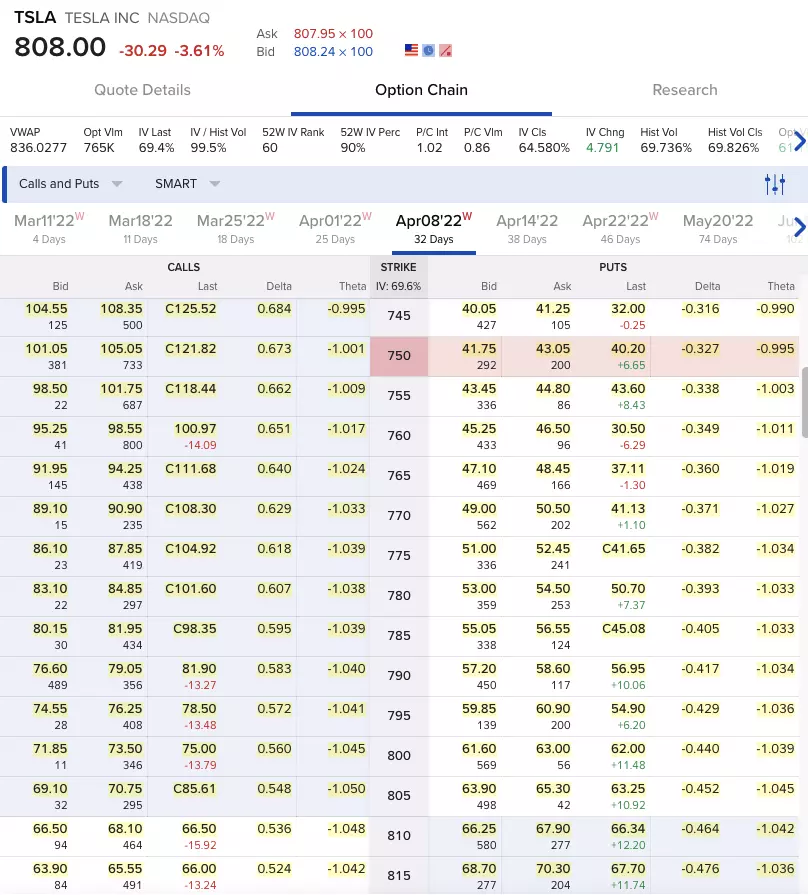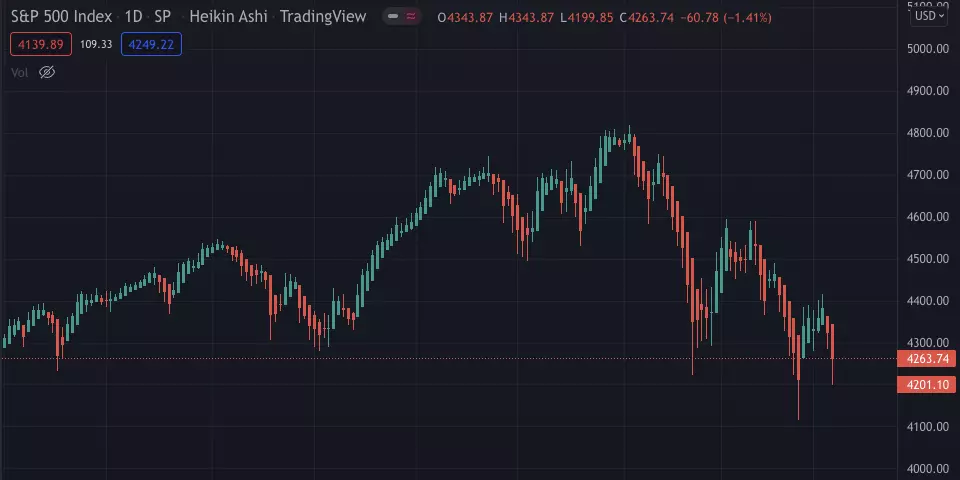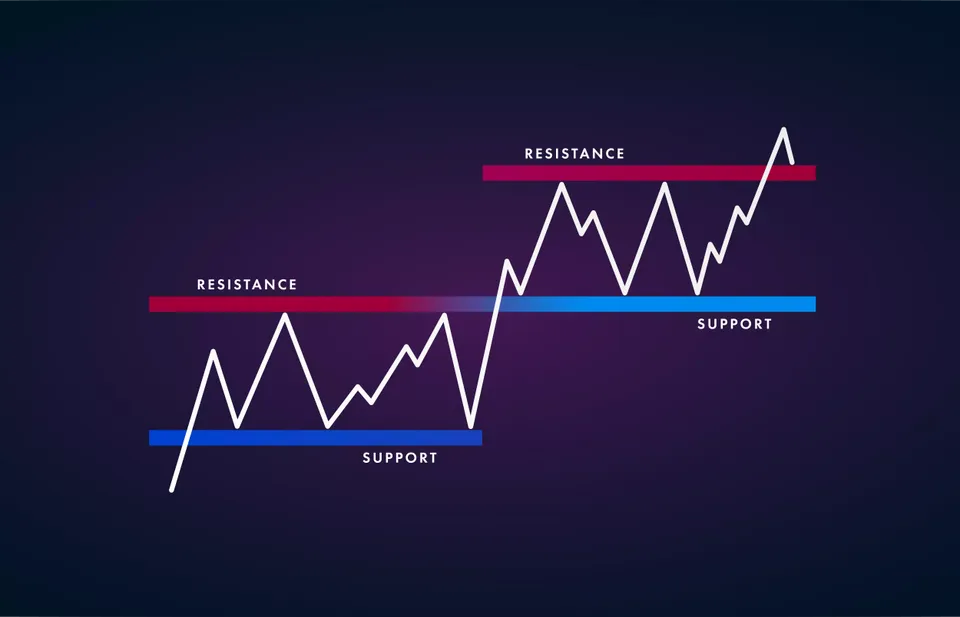As inflation is going up, Ukraine and Russia war not ending, FED to raise interest rates, people panic and rush to hedge their portfolios and buy put option contracts as insurance. When there's high demand for put contracts, premiums also skyrocket as implied volatility shoots up.
This would be a perfect time to profit and jump selling more options for that juicy passive income. Pick a stock you would like to own and choose a strike you are comfortable with.
But first, note that options trading can be risky, and there's always the possibility for you to lose money, especially in uncertain times. Check out my complete options guide if you don't know how to trade options.
Risk Disclaimer: Options trading involves considerable risk and is unsuitable for all investors. There is a high risk of losing the entire investment within a relatively short period of time. Please make sure you are willing to take this risk before deciding to trade options.Options Premium and Implied Volatility
To better understand why selling options can be so profitable when implied volatility is high, you need to know how options are priced.
What is implied volatility? Implied volatility is a metric, usually called IV, that changes based on the market expectations for how risky the stock option is, and it's influenced by the option's supply and demand.
According to Investopedia: Implied volatility represents the expected volatility of a stock over the life of the option. As expectations change, option premiums react appropriately. Implied volatility is directly influenced by the supply and demand of the underlying options and by the market's expectation of the share price's direction. As expectations rise, or as the demand for an option increases, implied volatility will rise. Options that have high levels of implied volatility will result in high-priced option premiums.
In the current market conditions, the market declines rapidly. Uncertainty and panic lead to a rapid increase in volatility, causing options prices to surge. This could be a massive opportunity as an option seller.
Selling PUT Options as Insurance
Instead of buying more shares while the stock price is falling, you have the opportunity to pick an even better price by selling put options.
Let's say you like a company like Tesla, and you already own a significant amount of shares in your portfolio. You see the stock market is falling right now, and you would like to add more shares, but there's also the possibility of the price falling even more. The current price for TSLA is $806.56, but even if you don't mind owning more shares at this price, you've done your research and you'd be even happier to buy them close to $700.
Let's look at the TSLA options chain PUT options expiring next month.

Take a look at the right side of the chain. Those are the PUT options for TSLA expiring on April 8th. The bid and ask would represent the option price (or premium) for each Strike price. You can also see that TSLA now has an Implied Volatility of 69.6%, which is quite elevated compared to its historical IV.
To know if the IV is high or low, you would need to track it manually in time or look at the historical IV for the stock if your broker has that data available. Unfortunately, all external tools I can find are available at a monthly premium. However, a few tools out there (like MarketChameleon) give you some free information as to how elevated the IV is compared to historical performance.
Going back to the options chain, you know you would love to buy Tesla stock around $700, however, it does have to drop another 10-15% to reach that price... What if I tell you that you could actually have a chance to catch that price much sooner by selling the 750 PUT option if the stock price drops around 7% and remain under $750 by expiration.
As an option seller, you are obligated to buy the underlying asset from the buyer of the option at the agreed strike price should the price drop below the strike. In return, you receive the premium the buyer paid for the PUT option contract.
In our case, when you sell the 750 strike PUT option, you receive $41.75 per share as a premium. This means that should the price drop more and stay below $750 till expiration, you will have to buy 100 TSLA shares at $750. However, if we subtract the $41.75 premium you collected, your cost basis will actually be somewhere close to your target buy price of $708.25. On the other hand, should the price stay above $750 by expiration, then the option expires worthless, and you get to keep the premium in return, yielding a nice 5.56% profit for the privilege of waiting for the price to drop.
Keep in mind that when you are selling put options, you will have to put down the collateral equivalent of 100 shares of the underlying stock which can sometimes be expensive. This is because you must buy 100 shares of the stock should the price fall below your strike. Always think about this as selling insurance to other people. You take the risk, and the buyer pays you for their peace of mind.
If you want to start selling options and also help support my blog, check out the following link to set up an account with Interactive Brokers.
Interactive Brokers (Worldwide): https://ibkr.com/referral/valjohannes232 - If you sign up using this link you will get $1 in IBKR shares for every $100 of cash for up to $1000 worth of IBKR shares. The average balance must be maintained for at least 1 year for you to get the shares.
Bottom Line
It's always hard to see your portfolio losing money every day. Especially when this could be the start of a bear market. Keep calm and assess the situation. Redo your due diligence for all the companies you own. Have the fundamentals changed? If nothing changed, I've always asked... what makes you love a company at $100 and hate it at $50 tomorrow?
In the markets, there's always an opportunity to make money. While other people panic, those who carefully weigh the risks will always end up winning.





